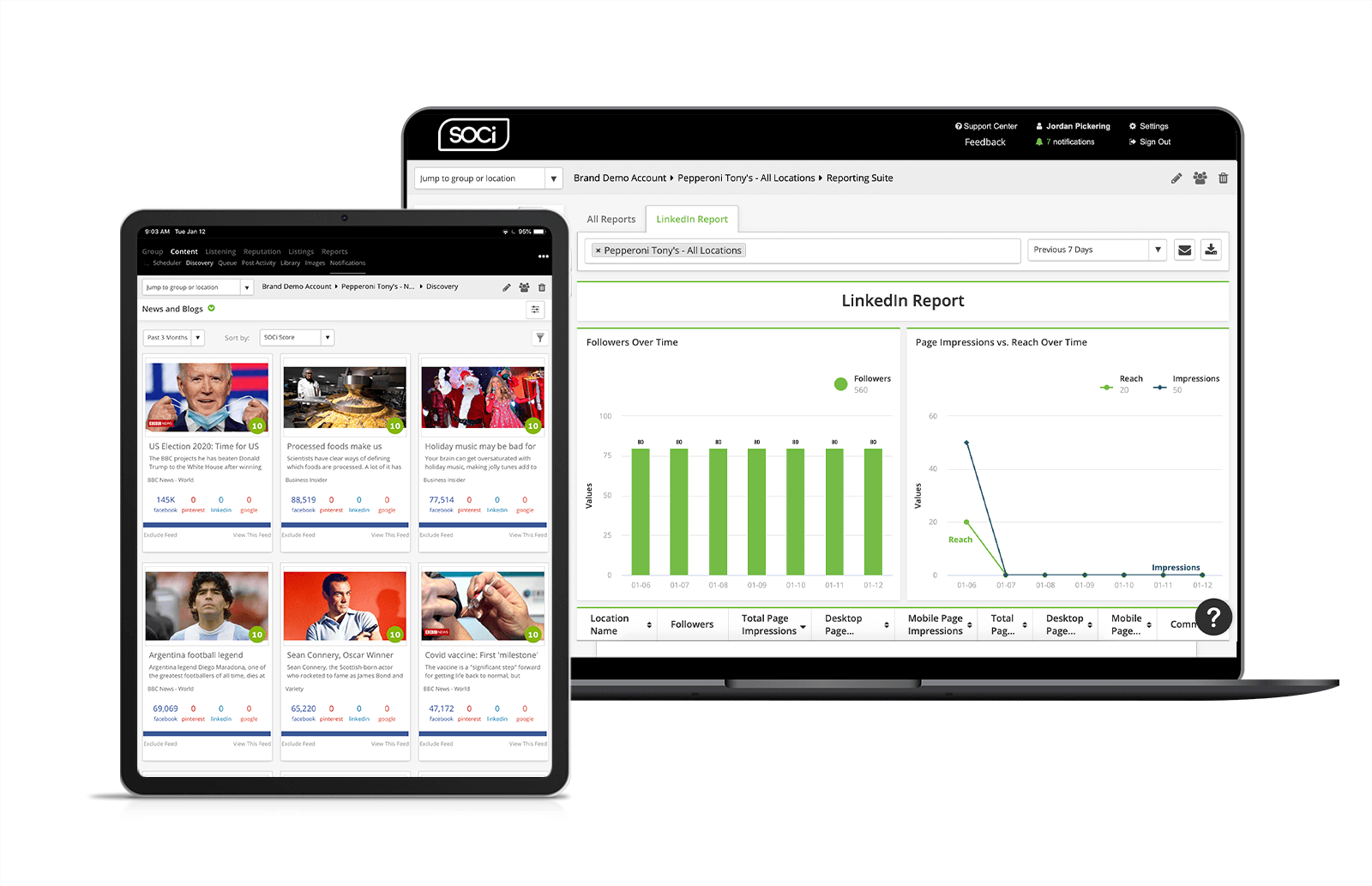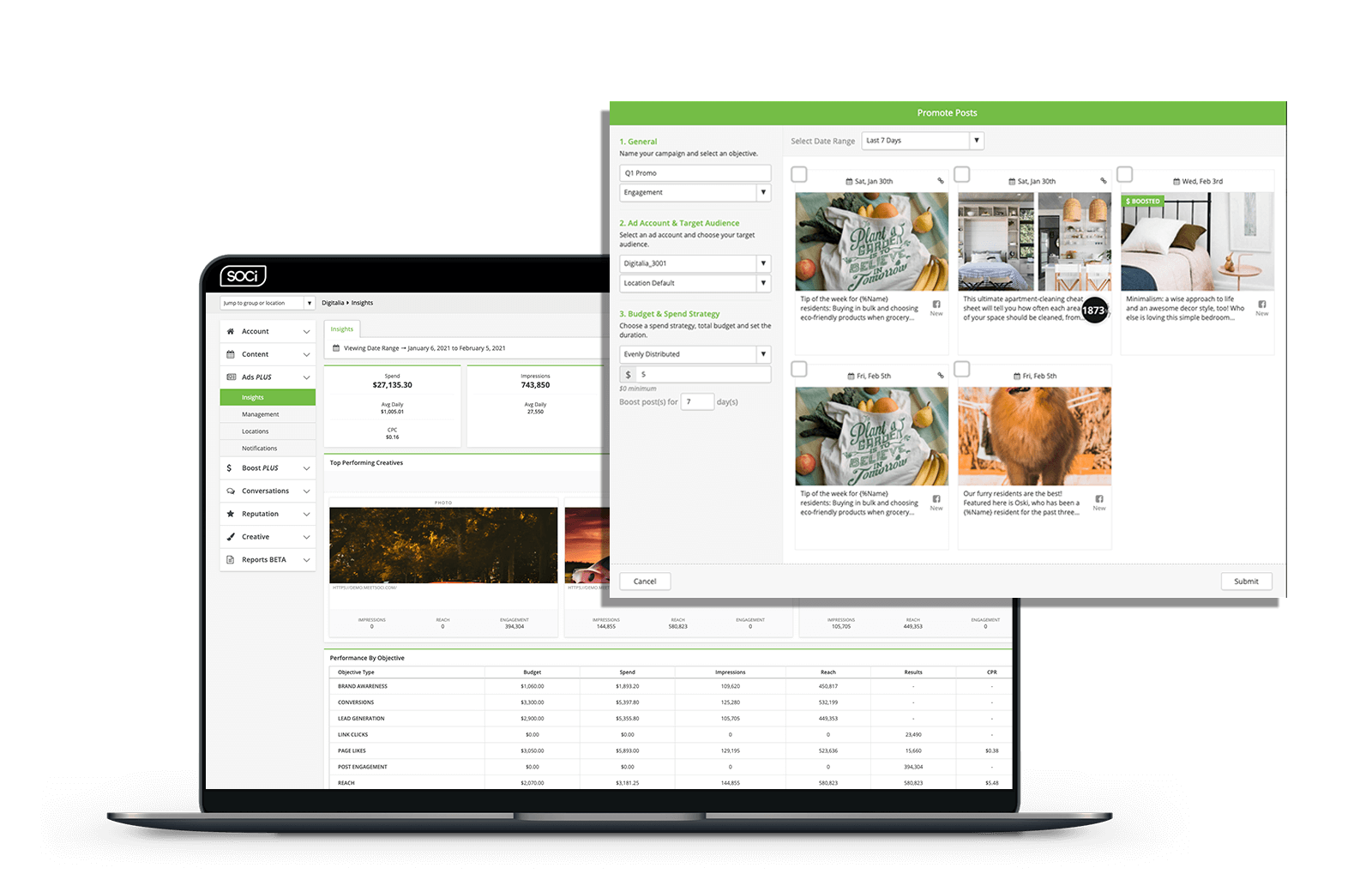Proof Before Purchase: Customer Journeys Start With Search, End With Social
Organic vs. Paid Content: What’s Changed and What’s the Payoff?
Organic vs. Paid Content: What’s Changed and What’s the Payoff?
The rules of local social media are constantly changing. One minute you hear that you should be focusing your efforts on organic content, and the next, you hear organic is dead. What should you believe? While local social platforms have to change algorithms that cause the importance of organic and paid content to shift, they play a role in a successful localized social strategy.
Within this blog, we’ll look at what’s new in organic and paid content and break down both advantages and disadvantages. You’ll also find tips to implement a mixture of paid and organic social content into your marketing efforts to accomplish your localized marketing goals and command the attention you deserve.
Organic Social Content – What’s New
Organic social content is free content that you post directly to your local social pages. With organic reach, you can expect a percentage of people following your page to see your content, along with people following your followers and those following any hashtags you include. While organic content often has a lower reach when compared to paid content, it’s still essential. Organic content is the best way to grow a connection with your local communities.
Typically, multi-location marketers utilize organic content to:
- Share user-generated content and brand success stories
- Highlight promotions going on at the local level
- Provide insight into local products or services
- Promote upcoming events
Without organic content, your local social channels would be bare. If consumers see an ad from your multi-location business on social media, but your local pages don’t have any organic content, there will be a disconnect. The consumer needs to see that your business is taking time and effort to connect with local audiences through organic content.
A Look Into Paid Social Content
Paid social content often performs better than organic content if executed correctly. Social media advertising is also the most cost-efficient way to engage your customers in conversations. Paid social media is becoming more advanced than ever, allowing you to target the right audience. For instance, on Facebook, you can choose your objective, whether it’s brand awareness, reach, lead generation, or something else. Once you select your goal, you can then choose your target audience. Again, Facebook allows you to narrow down your audience and target the correct type of potential consumers.
After picking your target audience, the rest is pretty straightforward. You then set your budget, decide the format of the ad you want to create and send your request to Facebook. While Facebook ads offer some of the most advanced options available, other local social platforms provide a similar experience.
Advantages and Disadvantages of Each
When looking at paid and organic content, it’s easy to find the benefits of both. Paid advertising uses analytics to track its performance, so you can see how it’s benefiting your multi-location business. For instance, with paid advertising, your multi-location business can:
- Expand its reach
- Raise brand awareness
- Attract new followers
- Gather more leads
With so many benefits, you may be wondering why you would even consider anything other than paid content, but organic content has numerous benefits as well. Organic local social content allows your multi-location business to:
- Build relationships at the local level
- Provide quality customer service
- Increase brand awareness locally
- Boost your business’s validity
It’s easy to see the benefits of both, but are there any disadvantages? With paid social, the budget is often a concern among multi-location marketers. Many businesses have had to make budget cuts over the past year due to the pandemic, and spending extra dollars isn’t an option right now. The good news is, paid social allows you to pick your budget. Whether you’re starting small or have a healthy ad spend, you can still test paid social. If you see that your paid social efforts are beginning to bring in more leads and increase your ROI, you can find ways to consolidate areas of your marketing budget to put more money towards paid.
With organic social, many multi-location marketers are concerned about the amount of time it takes to post content across all local pages. Similarly, organic social media takes effort because you have to think of different content types to post every day or at least multiple times a week. SOCi’s Content Management solution, which we’ll dive more into next, can transform those limitations into an advantage, giving you more time to spend on your paid strategy.

Integrating Paid and Organic Into Your Local Social Efforts
Organic and paid content both have their place in localized social media. Now that you know the benefits of both, you can start developing a winning local social strategy. Managing social pages across all your locations is challenging enough. It’s time for you to find tools that help you execute a paid and organic strategy seamlessly, providing you more time to focus on other areas of your localized marketing efforts.
Our previously mentioned SOCi Content Management solution enables multi-location businesses to manage and deploy localized content at scale while maintaining brand consistency at both the enterprise and local levels. SOCi’s Content Management also allows your multi-location business to publish to all major social networks to amplify audience engagement with localized shareable content. Now that you’ve got the organic content figured out, what about the paid?

Whether you are a multi-location marketer or an agency that needs to drive results for 1,000+ locations, SOCi Ads PLUS lets you instantly create and deploy highly customized, targeted local ads. With the use of our Dynamic Text and patent-pending Dynamic Image technology, you can deploy a single ad that will auto-populate with local text and images across all of your locations. For more information on how SOCi can deliver the support you need to dominate your industry and win more sales, request a demo today!




